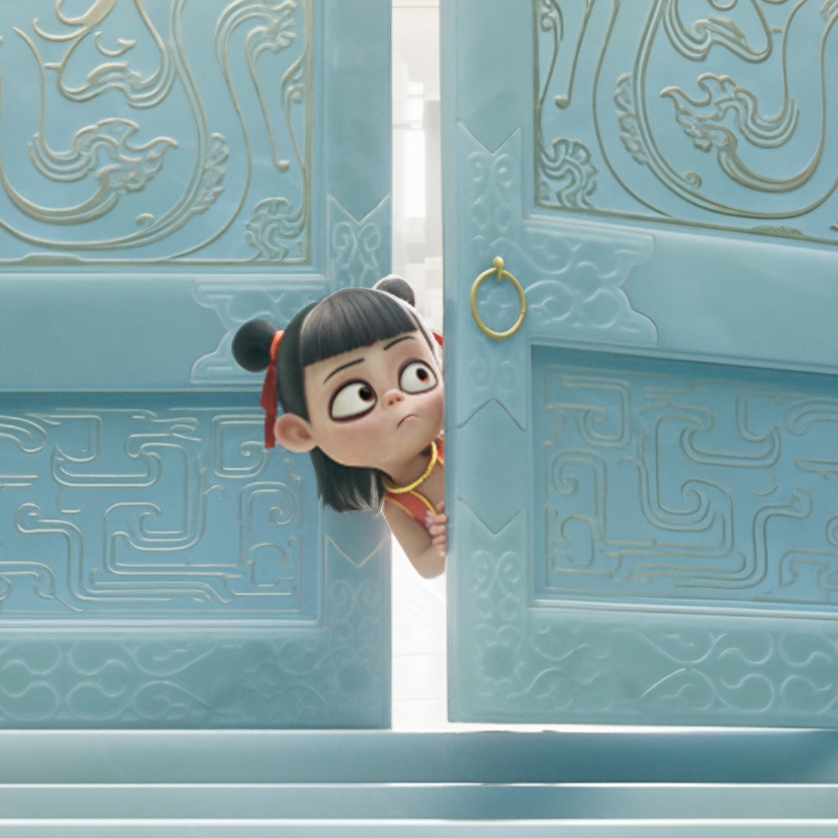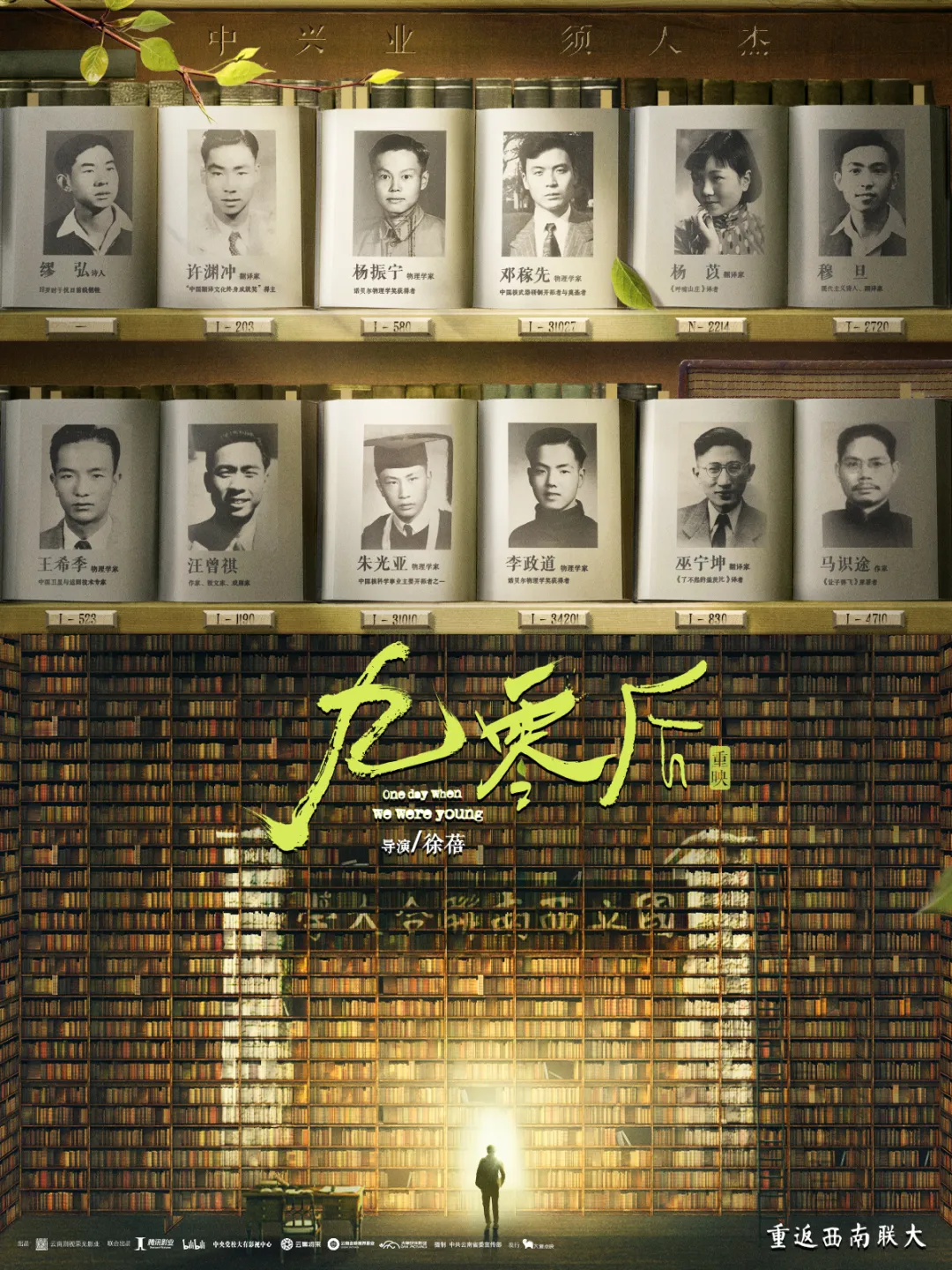
Recently, due to the popularity of several movies, the image of Nezha has become popular again. There is a question about Nezha in "Exploring Chinese Idioms": Which of the following idioms has nothing to do with Nezha's magic weapon: A. "A gamble with all your strength". B. "King Kong's eyes are furious". C. "In a rush and in a hurry".
When we designed this question, we referred to the legend of Nezha.

Stills from Nezha: The Devil Boy Conquers the Dragon King
Nezha was originally a Buddhist god. After being introduced to China, he went through a long evolution and was finally finalized in the long novel of gods and demons in the late Ming Dynasty, "The Investiture of the Gods". In this book. Nezha was originally the reincarnation of Lingzhuzi, the son of Li Jing, the general of Chentangguan. He was accepted as a disciple by Taiyi Zhenren, named "Nezha", and given the magic weapons Hun Tian Ling and Qian Kun Circle. Because he used Hun Tian Ling to stir the Dragon Palace while playing in the water, he killed the patrolling sea yaksha and the third prince of the Dragon King Ao Bing, and pulled out the dragon tendons, which triggered the revenge of the four sea dragon kings. In order to protect the people's parents, Nezha cut out his bones to return to his father and cut off his flesh to return to his mother and committed suicide. Taiyi Zhenren reshaped his body with a lotus, and later made great contributions to King Wu's conquest of King Zhou, and finally became a saint in the flesh.
The image of Nezha demonstrates the rebellious spirit of resisting patriarchy, destiny and ethical constraints. His magic weapons also symbolize extraordinary divinity and fighting qualities, becoming the eternal symbol of young heroes in Chinese culture.
So back to the options at the beginning, this question chooses B "King Kong's angry eyes", because all of Nezha's magic weapons have been listed, and none of them have anything to do with "King Kong's angry eyes". A literally contains Nezha's "Qian Kun Circle", and B literally contains Nezha's "Wind Fire Wheel".

Nezha's Hot Wheels
In the Investiture of the Gods, Nezha steps on the wind-fire wheel, which is very similar to today's roller skates, balance bikes or running shoes. This wheel-shaped thing is actually borrowed from local fire gods (such as Huaguang, Wang Lingguan, etc.). For example, Huaguang Tianwang. It has already appeared in the zaju " Journey to the West" in the late Yuan Dynasty and early Ming Dynasty: "Five hundred fire sleeves, a pair of fire wheels. The fire gourd tightly binds Shi Kuang, and Li Lou drags Ding Jinqiang ". His weapons are not only fire wheels, but also golden spears, which are what Nezha called fire spears. And "Journey to the South", with Huaguang as the protagonist, explains the origin of the two wind and fire wheels: Huaguang subdued the two judges of wind and fire and obtained them.
The two judges were named Li Lou and Shi Kuang. Li Lou was the man with the best eyesight in ancient legends. There is an idiom related to him, "square and circle rules". "Mencius: Li Lou Part 1": " Mencius said: 'Li Lou's vision and Gongshu Ban's skill, without compasses and rulers, cannot make squares and circles.' " This means that even with Li Lou's precise eyesight and Gongshu Ban's skill, they cannot draw squares and circles without compasses and rulers.
Shi Kuang was a blind musician in the Spring and Autumn Period. He was a real person in history and lived during the reign of Duke Ping of Jin. It is said that he composed the famous zither piece "White Snow". This brings up the well-known idiom "Yangchun Baixue". "Yangchun" and "Baixue" were originally elegant pieces of music, but later they were extended to literary and artistic works that were profound and elegant and not easy to understand.
Since Shi Kuang was a musician, his ears were the most sensitive. So "Shi Kuang's intelligence" has become an idiom. In Romance of the Three Kingdoms, Jiang Gan came to persuade Zhou Yu to surrender. Zhou Yu said, " Although I am not as smart as Shi Kuang, I can understand the elegant meaning of the music by hearing the strings and songs. " It means that although I am not as good as Shi Kuang in hearing, I also know your intention.
Today, we often say that someone is "smart", which means that the person has high intelligence. But in ancient times, "聪" and "明" had different meanings. "聪" specifically refers to good hearing, while "明" specifically refers to good eyesight. Of course, only if a person is good at listening and seeing can he or she acquire information and have a sharp mind. So it was later that "智能" was extended to mean a quick mind. This gave us another idiom "耳聪目明", which means good hearing and strong eyesight. Of course, it is also often used to describe a sharp eye and a clear mind.
These two people had nothing to do with Nezha, but at some point, they became Hua Guang's followers, one responsible for watching and the other for listening. Later, they turned into two wind and fire wheels and were stepped on by Hua Guang. Ancient myths and legends often communicate with each other. Nezha's wind and fire wheels were actually borrowed from Hua Guang, so it was equivalent to him stepping on these two ancient people.
There is no clear clue as to why the Wind Fire Wheel was transformed by Shi Kuang and Li Lou. However, these two people have the same divine status as the other two minor gods, namely "Clairvoyance" and "Wind Hearing".
Most of us learned about "clairvoyance" and "superb hearing" from "Journey to the West". They were the little gods in front of the Jade Emperor, one responsible for seeing and the other for hearing. When Sun Wukong was born, it was these two who went to investigate and reported back to the Jade Emperor. Li Lou could see and Shi Kuang could hear, so people often said that Li Lou had clairvoyance and Shi Kuang had superb hearing.
The reason for this fabrication is probably because Huaguang and Nezha are both gods worshipped by the southeastern coast. After the Song Dynasty, the shipping industry in the southeastern coast began to develop, and people needed the protection of the gods at sea. The clairvoyance and the superb hearing came into being. Because during the voyage, it is necessary to observe the sea conditions in the distance and listen to the changes in the weather to ensure the safety of the voyage. Naturally, two other idioms are used here, called "eyes in all directions" and "ears in all directions". Only when safety is guaranteed can the journey be "fast and furious" and things can be done "in a vigorous and vigorous manner".
In fact, there are many more idioms related to Nezha, such as "three heads and six arms", which is the appearance of Nezha's Dharma body. For example, "Jingde Chuandeng Lu·Zen Master Shanzhao" says: " Three heads and six arms hold up the heaven and earth, and the angry Nezha (i.e. Nezha) strikes the emperor's bell. " "Journey to the West" inherits this image. In "Journey to the West", Nezha attacks the Flower-Fruit Mountain, shows his three-headed and six-armed Dharma body and fights with Sun Wukong.
But it is a little different in the Investiture of the Gods. In this story, Nezha has three heads and eight arms, and “three heads and eight arms” is actually an idiom. The Investiture of the Gods says:
Taiyi Zhenren taught Nezha the method of disappearing and appearing. Nezha was overjoyed, holding the Qiankun Circle in one hand, the Hun Tian Ling in the other, two Fire Spears in both hands, and a gold brick in one hand, leaving three hands empty; the Zhenren also took out the Nine Dragons Divine Fire Cover and the Yin Yang Sword, making a total of eight weapons.
Today, "three heads and six arms" or "three heads and eight arms" often refer to people with great abilities and praise them for being versatile. In fact, these two idioms come from Tantric Buddhism. In Tantric Buddhism, many deities have three heads and eight arms.
People in the Ming Dynasty were more willing to accept that Nezha had three heads and eight arms. In the Water Margin, there was a Liangshan hero called "Eight-armed Nezha Xiang Chong" who was good at using a set of cards and had 24 flying knives on his back. He could shoot people from a hundred steps away without missing. Because he was good at using flying knives, it was as if he had multiple arms, so he was nicknamed "Eight-armed Nezha". This shows that the appearance of Nezha with three heads and eight arms had long been deeply rooted in people's hearts in the Ming Dynasty.
The shape of "three heads and eight arms" can even be linked to the history of Beijing. The story of "Eight-armed Nezha City" is still circulating among the people of Beijing. It shows that after Emperor Chengzu Zhu Di moved the capital to Beijing, he ordered military advisors Liu Bowen and Yao Guangxiao to jointly design the capital. According to legend, Beijing was called "Kuhai Youzhou" in ancient times, where evil dragons lingered and floods occurred frequently, requiring divine power to suppress them. The two military advisors were ordered to draw a city map, and finally designed the city based on the prototype of "Eight-armed Nezha", using Nezha's fairy power to guard the dragon veins and subdue floods. Liu Bowen and Yao Guangxiao agreed to design the city map separately and compare them after seven days. When the two were thinking hard without results, they both dreamed of a child in red clothes instructing them to "draw according to me". The next day, they tracked the child to the agreed location and found that his image was very similar to Eight-armed Nezha: red clothes and red pants, with silk ribbons on his shoulders like arms, so they drew the city based on Nezha's body shape.
The two drew the drawings back to back, and the final drawings were almost the same: Zhengyang Gate was Nezha's head, the east and west gates of the city wall were ears, the eight gates of Chongwen and Xuanwu corresponded to the eight arms, the north gate was the feet, and the imperial city symbolized the five internal organs. However, Yao Guangxiao drew the northwest wall slanted because the wind blew his clothes, resulting in a missing corner in the northwest corner of Beijing when it was actually built.
This story is of course a folk legend, but it is precisely because Nezha's chaos in the sea had the effect of suppressing the Dragon King, and because Nezha has three heads and eight arms, that such a legend has been passed down.
Of course, if we relax the standards, idioms related to Nezha, such as "resurrection from the dead", "supernatural powers", and even "Nezha makes trouble in the sea" are almost idioms. But this article talks about idioms that you would never think of. There are so many cultural elements behind Nezha, which is also the charm of this image.
(The author of this article, Li Tianfei, is a well-known writer and scholar, winner of the Bing Xin Children's Book Award, and a member of the expert panel for CCTV's "Chinese Poetry Conference" and "Chinese Idioms".)


